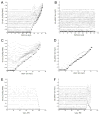Elucidating the fuzziness in physician decision making in ARDS
- PMID: 23463162
- PMCID: PMC3656147
- DOI: 10.1007/s10877-013-9449-2
Elucidating the fuzziness in physician decision making in ARDS
Abstract
The current standard of care for patients suffering from acute respiratory distress syndrome (ARDS) is ventilation with a tidal volume of 6 ml/kg predicted body weight (PBW), but variability remains in the tidal volumes that are actually used. This study aims to identify patient scenarios for which there is discordance between physicians in choice of tidal volume and positive end-expiratory pressure (PEEP) in ARDS patients. We developed an algorithm based on fuzzy logic for encapsulating the expertise of individual physicians regarding their use of tidal volume and PEEP in ARDS patients. The algorithm uses three input measurements: (1) peak airway pressure (PAP), (2) PEEP, and (3) arterial oxygen saturation (SaO₂). It then generates two output parameters: (1) the deviation of tidal volume from 6 ml/kg PBW, and (2) the change in PEEP from its current value. We captured 6 realizations of intensivist expertise in this algorithm and assessed their degree of concordance using a Monte Carlo simulation. Variability in the tidal volume recommended by the algorithm increased for PAP > 30 cmH₂O and PEEP > 5 cmH₂O. Tidal volume variability decreased for SaO₂ > 90 %. Variability in the recommended change in PEEP increased for PEEP > 5 cmH₂O and for SaO₂ near 90 %. Intensivists vary in their management of ARDS patients when peak airway pressures and PEEP are high, suggesting that the current goal of 6 ml/kg PBW may need to be revisited under these conditions.
Conflict of interest statement
The authors declare that they have no conflict of interest.
Figures


Similar articles
-
Controlling mechanical ventilation in acute respiratory distress syndrome with fuzzy logic.J Crit Care. 2014 Aug;29(4):551-6. doi: 10.1016/j.jcrc.2014.03.009. Epub 2014 Mar 21. J Crit Care. 2014. PMID: 24721387 Free PMC article.
-
Driving Pressure-limited Strategy for Patients with Acute Respiratory Distress Syndrome. A Pilot Randomized Clinical Trial.Ann Am Thorac Soc. 2020 May;17(5):596-604. doi: 10.1513/AnnalsATS.201907-506OC. Ann Am Thorac Soc. 2020. PMID: 32069068 Clinical Trial.
-
Respiratory and haemodynamic changes during decremental open lung positive end-expiratory pressure titration in patients with acute respiratory distress syndrome.Crit Care. 2009;13(2):R59. doi: 10.1186/cc7786. Epub 2009 Apr 17. Crit Care. 2009. PMID: 19374751 Free PMC article. Clinical Trial.
-
Lung recruitment maneuvers in acute respiratory distress syndrome and facilitating resolution.Crit Care Med. 2003 Apr;31(4 Suppl):S265-71. doi: 10.1097/01.CCM.0000057902.29449.29. Crit Care Med. 2003. PMID: 12682451 Review.
-
Mechanical ventilation of the healthy lungs: lessons learned from recent trials.Curr Opin Crit Care. 2021 Feb 1;27(1):55-59. doi: 10.1097/MCC.0000000000000787. Curr Opin Crit Care. 2021. PMID: 33315635 Review.
Cited by
-
Computerized Decision Support Systems for Mechanical Ventilation in Children.J Pediatr Intensive Care. 2016 Sep;5(3):95-100. doi: 10.1055/s-0035-1568161. Epub 2015 Nov 18. J Pediatr Intensive Care. 2016. PMID: 31110892 Free PMC article. Review.
-
A systematic review of machine learning models for management, prediction and classification of ARDS.Respir Res. 2024 Jun 4;25(1):232. doi: 10.1186/s12931-024-02834-x. Respir Res. 2024. PMID: 38834976 Free PMC article. Review.
-
Controlling mechanical ventilation in acute respiratory distress syndrome with fuzzy logic.J Crit Care. 2014 Aug;29(4):551-6. doi: 10.1016/j.jcrc.2014.03.009. Epub 2014 Mar 21. J Crit Care. 2014. PMID: 24721387 Free PMC article.
-
The role of computer-based clinical decision support systems to deliver protective mechanical ventilation.Curr Opin Crit Care. 2020 Feb;26(1):73-81. doi: 10.1097/MCC.0000000000000688. Curr Opin Crit Care. 2020. PMID: 31764194 Free PMC article. Review.
References
-
- The Acute Respiratory Distress Syndrome Network. Ventilation with lower tidal volumes as compared with traditional tidal volumes for acute lung injury and the acute respiratory distress syndrome. The New England journal of medicine. 2000;342:1301–1308. - PubMed
-
- Amato MB, Barbas CS, Medeiros DM, Magaldi RB, Schettino GP, Lorenzi-Filho G, Kairalla RA, Deheinzelin D, Munoz C, Oliveira R, Takagaki TY, Carvalho CR. Effect of a protective-ventilation strategy on mortality in the acute respiratory distress syndrome. The New England journal of medicine. 1998;338:347–354. - PubMed
-
- Holcomb BW, Wheeler AP, Ely EW. New ways to reduce unnecessary variation and improve outcomes in the intensive care unit. Current opinion in critical care. 2001;7:304–311. - PubMed
-
- Kallet RH. Evidence-based management of acute lung injury and acute respiratory distress syndrome. Respiratory care. 2004;49:793–809. - PubMed
-
- Guyatt G, Cairns J, Churchill D, et al. Evidence-based medicine. A new approach to teaching the practice of medicine. Jama. 1992;268:2420–2425. - PubMed
Publication types
MeSH terms
Grants and funding
LinkOut - more resources
Full Text Sources
Other Literature Sources
Research Materials

